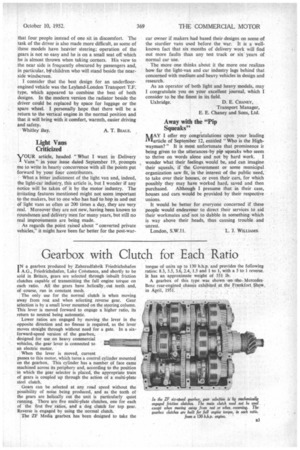Light Vans Criticized
Page 37

If you've noticed an error in this article please click here to report it so we can fix it.
TOUR article, headed "What I want in Delivery Vans." in your issue dated September 19, prompts me to write in hearty concurrence with all the points put forward by your four contributors.
What a bitter indictment of the light van and, indeed, the light-car industry, this article is, but I wonder if any notice will be taken of it by the motor industry. The irritating features mentioned might not seem important to the makers, but to one who has had to hop in and out of light vans as often as 200 times a day, they are very real. Moreover they are not new, having been known to roundsmen and delivery men for many years, but still no real improvements are being made.
As regards the point raised about "converted private vehicles," it might have been far better for the post-war car owner if makers had based their designs on some of the sturdier vans used before the war. It is a wellknown fact that six months of delivery work will find out more faults than any test track or six • years of normal car use.
The more one thinks about it the more one realizes how far the light-van and car industry lags behind that concerned with medium and heavy vehicles in design and research.
As an operator of both light and heavy models, may I congratulate you on your excellent journal, which I consider to be the finest in its field.
Uxbridge. D. E. CHANEY, Transport Manager, E. E. Chaney and Sons, Ltd.












































































